
Creating an effective landing page is more art than science, requiring a nuanced blend of aesthetics, psychology, and technology. The perfect landing page is the cornerstone of successful digital marketing and advertising strategies, as it directly influences both user engagement and conversion rates.
In this exploration, we delve into the critical attributes that define a good landing page experience, highlighting the essential elements that not only capture attention but also convert visitors into leads and customers efficiently. From compelling calls to action to seamless mobile optimization, understanding these attributes will empower you to craft landing pages that resonate with your audience and drive your business goals forward.
Table of Contents
Which Attributes Describe a Good Landing Page Experience?
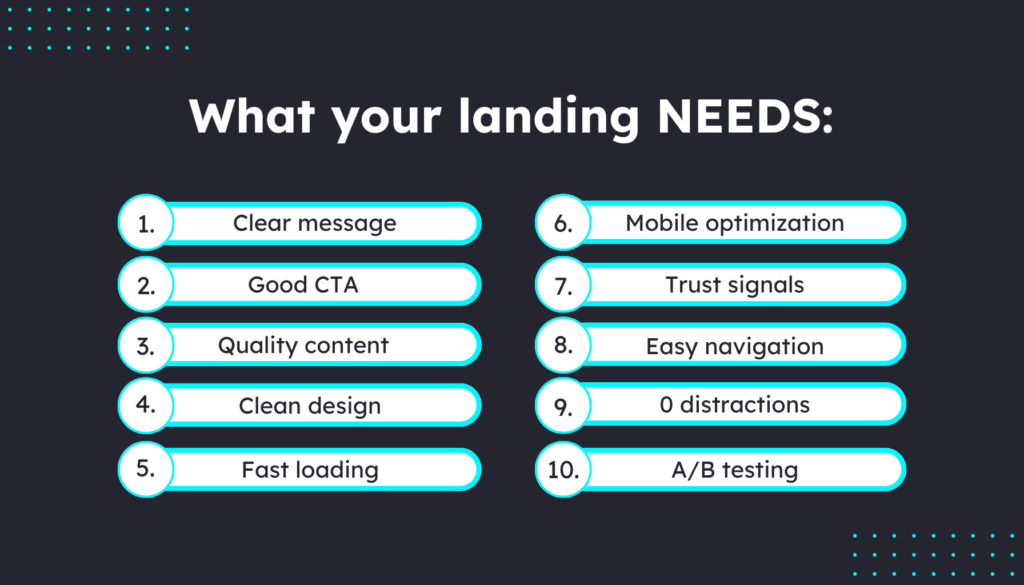
So, as you have just read, a good landing page experience is crucial not just for achieving high conversion rates and satisfying user expectations, but for being well-perceived by Google Ads. Here you have several key attributes that contribute to an effective landing page:
1. Clear and Concise Messaging
- Objective: The main objective is to communicate the purpose of the landing page and the value of the offer clearly and concisely.
- How to do it?: Use a compelling headline that grabs attention and directly addresses the visitor’s needs or problems. Subheadings should support the main message, shortly offering additional details or benefits.
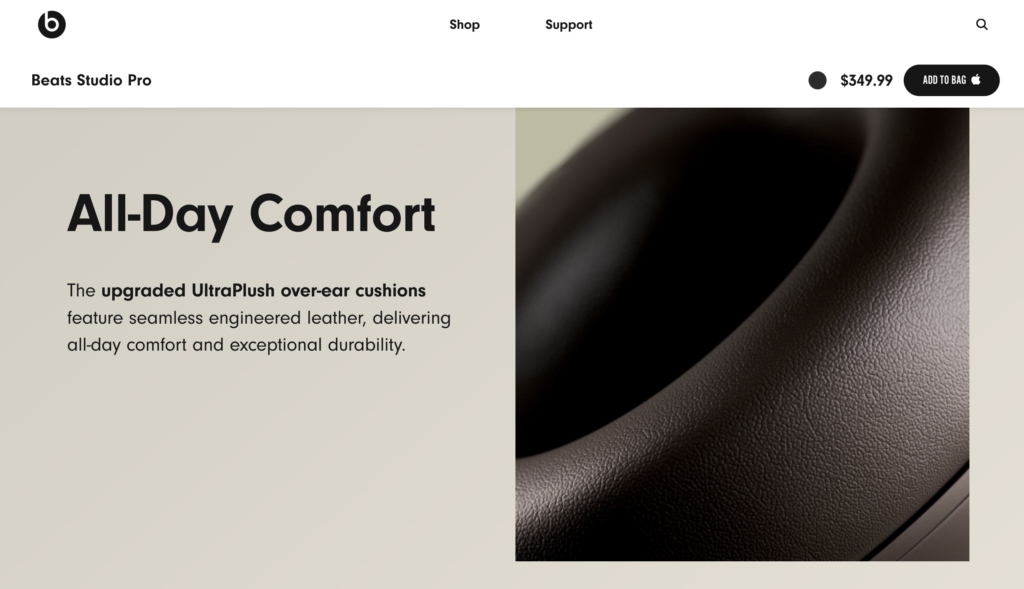
2. Compelling Call to Action
- Objective: To motivate the visitor to take a specific action, such as signing up, purchasing, or downloading something.
- How to do it?: The CTA button should be visually distinct and placed in a prominent location. Use action words like “Get Started,” “Join Now,” or “Download Free”. The color and size of the button should make it stand out from the rest of the page content.
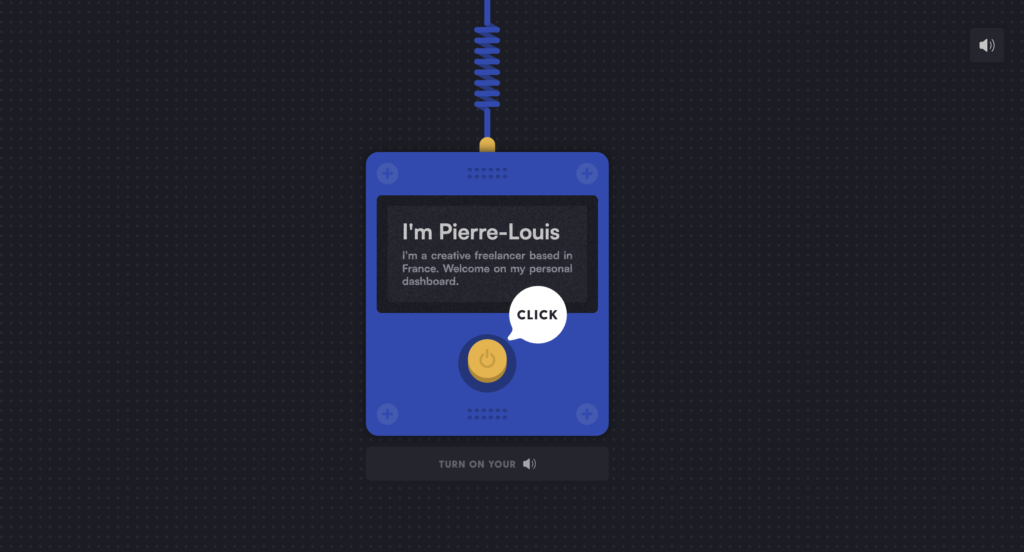
3. Relevant and High-Quality Content
- Objective: To engage visitors with content that is directly relevant to their interests and to what was advertised.
- How to do it?: Include well-written text, engaging images, or videos that explain the product or service in detail. Ensure the content addresses visitors’ questions and leads them toward the CTA.
4. Simplicity and Clean Design
- Objective: To focus the visitor’s attention on the most important elements and facilitate a pleasant viewing experience.
- How to do it?: Use a clean layout with plenty of white space. Arrange content in a logical flow and avoid visual clutter that could distract from the key message.

5. Fast Load Times
- Objective: To reduce bounce rates and ensure that visitors don’t leave the page due to slow loading.
- How to do it?: Optimize images and videos for the web, minimize the use of heavy scripts, and use reliable hosting solutions. Tools like Google PageSpeed Insights can provide recommendations for improvements.
6. Mobile Optimization
- Objective: To ensure that the landing page provides a good experience across all devices, particularly mobiles.
- How to do it?: Design the page using responsive design techniques so it automatically adjusts to the screen size and resolution. Touch-friendly elements and easily clickable buttons should be used.
7. Trust Signals
- Objective: To build credibility and reassure visitors that they are making a safe choice.
- How to do it?: Display testimonials, user reviews, security certificates, and logos of well-known clients. These elements should be positioned where they reinforce the message but do not overwhelm the main content.
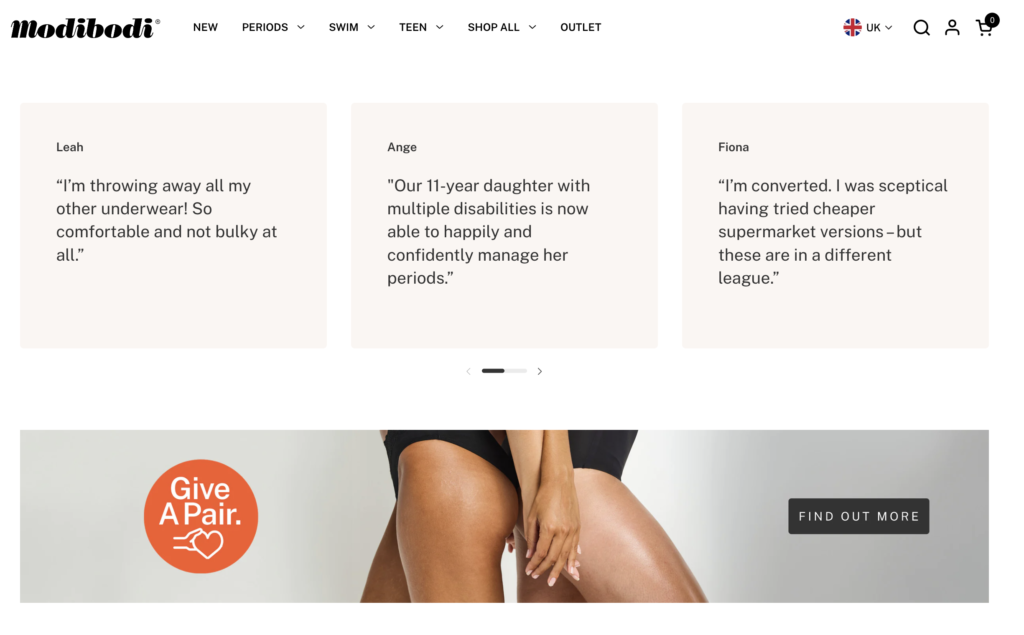
8. Easy Navigation
- Objective: To provide a seamless experience for users who wish to explore more about your brand or product.
- How to do it?: Include a simplified menu or links to other important pages like “Contact Us,” “About,” or product details. This should be unobtrusive but accessible.
9. Minimal Distractions
- Objective: To keep the user focused on the conversion goal.
- How to do it?: Limit the number of external links or unrelated information. The main focus should be on guiding the user towards the CTA without offering too many alternative paths.
10. Testing and Optimization
- Objective: To continuously improve the effectiveness of the landing page.
- How to do it?: Use Pathmonk Accelerate, a tool designed to help businesses optimize their website performance and conversion rates through personalized interactions based on your visitors’ intent… How can it be of use?
AI-Powered Personalized Experiences: Pathmonk Accelerate analyzes visitor behavior in real-time using machine learning. It adjusts the content, offers, and calls to action on your landing page to match the visitor’s current intent and engagement level. For example, if a visitor has been looking at a specific product for a while, Pathmonk Accelerate might display a discount offer for that product to help close the sale. Also, by predicting a visitor’s next move, our tool can proactively display relevant information or prompts to guide them toward conversion before they consider leaving the page.
More Sales From Your Website With AI
Personalized interactions based on your users' behaviour to get +50% more conversions.
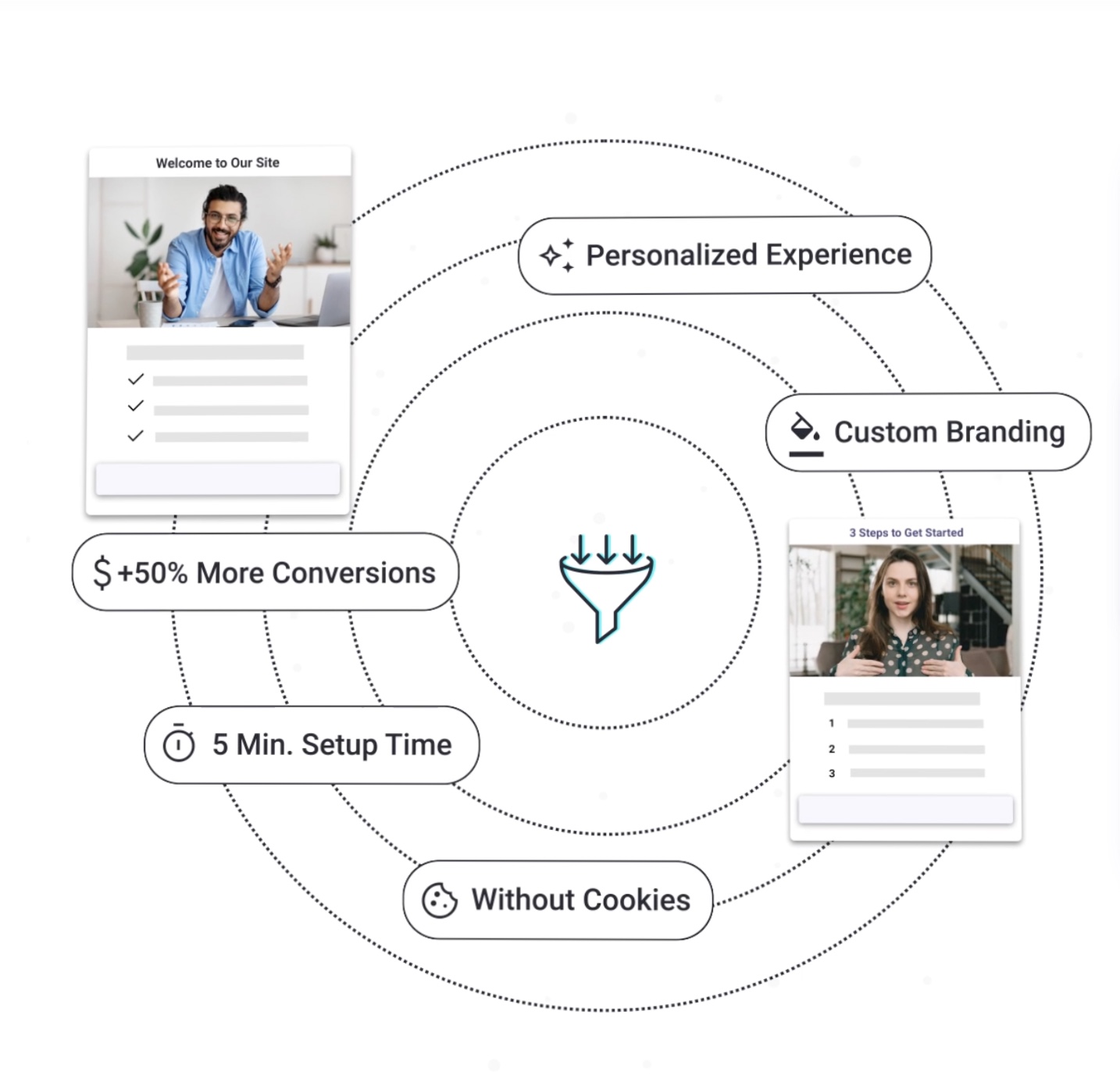
Seamless CRM and Marketing Automation Integrations:Our tool can pull information from integrated systems to further personalize the landing page based on past interactions or known preferences of the visitor. Furthermore, with integrated analytics, Pathmonk provides insights into which parts of the landing page are performing well and which are not, allowing for data-driven adjustments.
No Disruption to Existing Content: Pathmonk Accelerate uses overlays and widgets that integrate with your current landing page design, which means you don’t need to redesign or rebuild your existing pages. This not only saves time but also keeps your branding consistent.
Understanding the Components of The Quality Score
Did you know that the Quality Score in Google Ads is deeply intertwined with your landing page experience? Yep, it reflects how well your landing page meets the needs of users who click on your ad. And of course, you cannot take this for granted, why? Because this connection is crucial because the Quality Score directly affects both the cost of your ads and their effectiveness in reaching potential customers. So let’s see which aspects make a good landing page experience.
Quality Score is determined by three main factors:
- Expected Click-Through Rate: This predicts how likely it is that your ad will be clicked when shown.
- Ad Relevance: This evaluates how closely your ad matches the intent behind a user’s search query.
- Landing Page Experience: This assesses the quality and relevance of your landing page to the user who clicks on your ad.
Role of Landing Page Experience in Quality Score
- User Satisfaction: Google aims to provide the best user experience, which includes ensuring that users find what they’re expecting when they click an ad. A good landing page experience meets the user’s intent, either by providing the information they seek or a clear path to obtaining a product or service advertised.
- Relevance: Your landing page must be directly relevant to the keywords you bid on and the content of your ads. If your ad promotes a specific product, the landing page should focus on that product and make it easy for users to engage further, whether through more information or a direct path to purchase.
- Engagement: Landing pages that are engaging and easy to navigate encourages users to spend more time on your site, reducing bounce rates and increasing the likelihood of conversion. Google interprets these behaviors as signs of a positive user experience.
- Quality and Transparency: The content quality on your landing page should be high, offering value to the visitor. Additionally, your page should make it easy for users to find information about your business, including privacy policies, contact information, and customer service. This builds trust and credibility.
How Can I Check my Page Experience Status on Google?
To check your landing page experience status in Google Ads and get insights into how it might be affecting your ad performance, you can follow these steps:
- Log into Google Ads: Start by logging into your Google Ads account at https://ads.google.com/
- Navigate to Keywords: Go to the “Keywords” tab in your campaign to access specific details about your keywords and the associated landing pages.
- Check the Status Column: Within the Keywords section, look for a column titled “Status” which can give you insight into the performance of your keywords. Hovering over the speech bubble icon next to each keyword will show details about the keyword’s Quality Score.
- View the Quality Score: Click on the columns icon, then modify the columns to include “Quality Score” if it’s not already displayed. You’ll want to specifically view the details on “Landing page experience” which is one of the components of the Quality Score. The Quality Score components include expected click-through rate, ad relevance, and landing page experience. Google rates these components as Above Average, Average, or Below Average.
- Landing Page Experience: Look for the “Landing page experience” rating to see how Google assesses your landing page in terms of relevance and usability. This rating is influenced by factors such as the relevance of the landing page content to the ad, the page’s transparency (clear information about your business), navigability (ease of finding information and navigating the page), and page speed.
- PageSpeed Insights: Independently of Google Ads, use Google’s PageSpeed Insights tool (https://developers.google.com/speed/pagespeed/insights/) to analyze the speed and usability of your landing page on both mobile and desktop devices. Page speed is a crucial component of the landing page experience.
By reviewing these areas, you can get a comprehensive understanding of how Google views your landing page’s effectiveness and what specific steps you might take to improve it. Improving your landing page experience can lead to better ad positions, lower costs per click, and overall more efficient campaigns in Google Ads.
Ebook: Advanced lead generation for marketers
Discover new strategies to unlocking a flood of high-quality leads from your website.
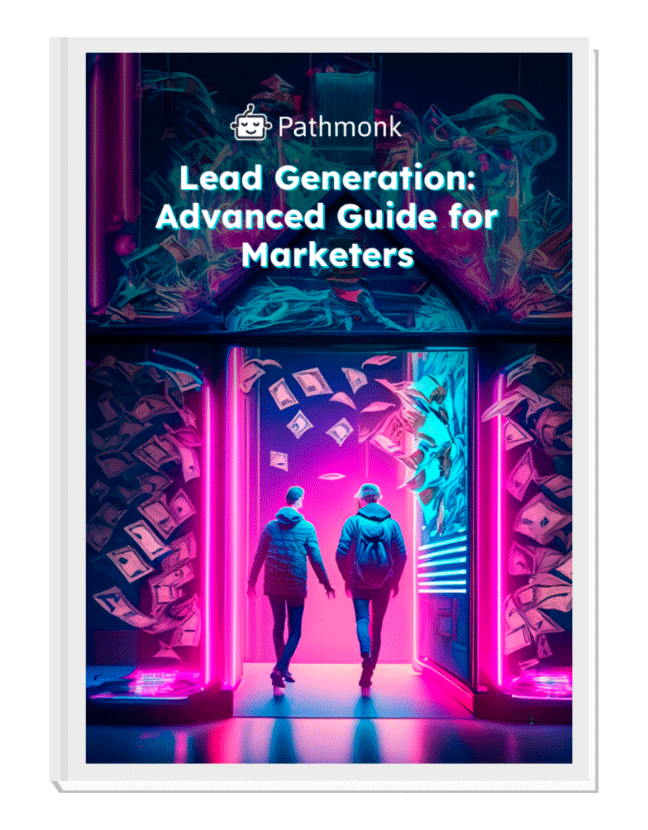
Frequently Asked Questions
What is a Good Loading Time for My Landing Page?
A good loading time for a landing page is generally considered to be 2 seconds or less. Faster loading times provide a better user experience, reduce bounce rates, and can positively impact your search engine ranking and conversion rates. Google has indicated that pages that load within this time frame tend to perform well in terms of user engagement.
To achieve and maintain fast loading times, regularly optimize images, leverage browser caching, minimize HTTP requests, and use fast and reliable hosting.
How Frequently Should I Update or Test my Landing Page?
Regular testing and updates are key to maintaining a good landing page experience. Conduct A/B testing to compare different versions of your page and see which elements perform best. Depending on the traffic and the insights gathered, you might update your landing page anywhere from once a quarter to several times a year.
How Does the Color Scheme Affect a Landing?
The color scheme of a landing page can significantly affect user engagement and conversions. Colors not only attract attention but also influence emotions and perceptions. It’s important to choose colors that align with your brand and the emotions you want to evoke. Contrast is also crucial, especially for making CTAs stand out.
How Can I Ensure My Landing is Accessible to All Users?
Ensuring your landing page is accessible involves designing for users with disabilities, which includes using appropriate color contrasts, providing text alternatives for images, ensuring navigability via keyboard, and using accessible forms and controls. This not only improves the user experience but also complies with legal standards like the ADA (Americans with Disabilities Act).





